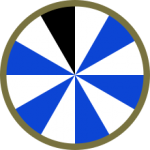Gamecock Fanatics
You are using an out of date browser. It may not display this or other websites correctly.
You should upgrade or use an alternative browser.
You should upgrade or use an alternative browser.
Countdown to Kickoff II: The Final 24 Days
- Thread starter Swayin
- Start date
Gary Cooper, Grace Kelly before she married-up, and Angel Eyes.
Probably no coincidence that The Good, the Bad, and the Ugly had the same percussive beat in it's main theme.
Probably no coincidence that The Good, the Bad, and the Ugly had the same percussive beat in it's main theme.
Last edited by a moderator:
USS Humphreys (APD-12). Formerly DD-236.
_underway_c1935.jpg)
_underway_c1935.jpg)
https://en.wikipedia.org/wiki/USS_Humphreys_(DD-236)After training landings Humphreys embarked elements of the 1st Cavalry Division at Nouméa and transported them to Townsville, Australia, in preparation for Operation Chronicle, landings on Woodlark and Kiriwina Islands. Arriving Townsville 20 May 1943, the ship sailed for Milne Bay 21 June, and from there landed troops and equipment on Woodlark 23 June without enemy opposition. This first landing of the long New Guinea campaign was also the first for Admiral Daniel E. Barbey's 7th Fleet Amphibious Force ("VII Phib"), and provided invaluable experience for the numerous amphibious operations to come.
_and_USS_Sands_(APD-13)_at_Townsville_in_1943.JPG)
Humphreys sailed to Brisbane for repairs during July and August, and returned to Milne Bay 15 August 1943. There she prepared for VII Phib's next move up the coast of New Guinea to Lae. After putting their troops ashore early 4 September, the high-speed transports remained off the beach to protect landing craft from Japanese air attack. The Australian troops landed by Humphreys and the other ships soon took Lae, and the ship departed 7 September with casualties for Buna. On the 10th she returned with three other transports for a night sweep of Huon Gulf, driving away supply barges and bombarding Japanese positions around Lae.
Next on Barbey's amphibious timetable in New Guinea was Finschhafen, where Humphreys and her sister ships carried out a surprise landing 22 September. After bringing reinforcements 8 days later, the ship took casualties to Buna 8 October and arrived at Goodenough Island 19 October for amphibious exercises.
Rolls-Royce Merlin V-12 engine
Three Packard V-12 engines in the old PT boats..
Last edited by a moderator:
Some folks also got smart and put Allison V-12 engines in the old wooden boats.
Last edited by a moderator:
The Grumman F-11 Tiger was a single seat carrier-based fighter utilized by the Navy from 1955-59; it's short lifespan was because after deployment it was found to be inferior to the Vought F-8 Crusader.
The F-11 Tiger is noted for being the first jet aircraft to shoot itself down. On 21 September 1956, during a test-firing of its 20 mm (0.79 in) cannons, pilot Tom Attridge fired two bursts midway through a shallow dive. As the trajectory of the cannon rounds decayed, they ultimately crossed paths with the Tiger as it continued its descent, disabling it and forcing Attridge to crash-land the aircraft; he survived.

The F-11 Tiger is noted for being the first jet aircraft to shoot itself down. On 21 September 1956, during a test-firing of its 20 mm (0.79 in) cannons, pilot Tom Attridge fired two bursts midway through a shallow dive. As the trajectory of the cannon rounds decayed, they ultimately crossed paths with the Tiger as it continued its descent, disabling it and forcing Attridge to crash-land the aircraft; he survived.

USS Intrepid (CV-11)
_underway_in_the_South_China_Sea_on_15_November_1968_(USN_1136993).jpg/800px-USS_Intrepid_(CVS-11)_underway_in_the_South_China_Sea_on_15_November_1968_(USN_1136993).jpg)

_underway_in_the_South_China_Sea_on_15_November_1968_(USN_1136993).jpg/800px-USS_Intrepid_(CVS-11)_underway_in_the_South_China_Sea_on_15_November_1968_(USN_1136993).jpg)
https://en.wikipedia.org/wiki/USS_Intrepid_(CV-11)USS Intrepid (CV/CVA/CVS-11), also known as The Fighting "I", is one of 24 Essex-class aircraft carriers built during World War II for the United States Navy. She is the fourth US Navy ship to bear the name. Commissioned in August 1943, Intrepid participated in several campaigns in the Pacific Theater of Operations, including the Battle of Leyte Gulf.
_during_Battle_of_Leyte_Gulf_1944.jpeg/1280px-USS_Intrepid_(CV-11)_during_Battle_of_Leyte_Gulf_1944.jpeg)
Decommissioned shortly after the end of the war, she was modernized and recommissioned in the early 1950s as an attack carrier (CVA), and then eventually became an antisubmarine carrier (CVS). In her second career, she served mainly in the Atlantic, but also participated in the Vietnam War. She was the recovery ship for a Mercury and a Gemini space mission.
_-_Mar_65_a.jpg/1280px-USS_Intrepid_(CV-11)_-_Mar_65_a.jpg)
Because of her prominent role in battle, she was nicknamed "the Fighting I", while her frequent bad luck and time spent in dry dock for repairs—she was torpedoed once and hit by four separate Japanese kamikaze aircraft—earned her the nicknames "Decrepit" and "the Dry I".
Decommissioned for the second time in 1974, in 1982 Intrepid became the foundation of the Intrepid Sea, Air & Space Museum in New York City.
World War II
On 27 October 1944, TG 38.2 returned to operations over Luzon; these included a raid on Manila on 29 October. That day, a kamikaze hit Intrepid on one of her port side gun positions; damage was minimal though ten men were killed and another six were wounded. A Japanese air raid on 25 November struck the fleet shortly after noon. Two kamikazes crashed into Intrepid, killing sixty-six men and causing a serious fire.

The ship remained on station, however, and the fires were extinguished within two hours. She was detached for repairs the following day, and reached San Francisco on 20 December.
Awards
Intrepid earned five battle stars and the Presidential Unit Citation during World War II, and a further three battle stars for Vietnam service.

Last edited by a moderator:
Homebrewcock
GCF Top Poster
Homebrewcock
GCF Top Poster
Sure miss this smile. RIP Kenny.



/cdn.vox-cdn.com/uploads/chorus_image/image/50438687/457863408.0.jpg)
/cdn.vox-cdn.com/uploads/chorus_image/image/44297758/usa-today-8111196.0.jpg)






